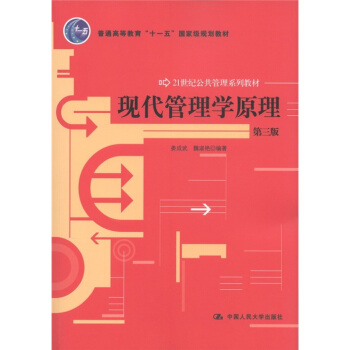![差分方程導論(第3版) [An Introduction to Difference Equations(Third Edition)]](https://pic.qciss.net/10888927/cde1275c-9432-4046-a3d0-119ce6c2c2c9.jpg)

具體描述
內容簡介
《差分方程導論(第3版)》是一本學習差分方程的本科生教程。書中將差分方程的經典方法和現代方法有機結閤,包括瞭新的一手材料,並且在錶述上足夠簡潔明瞭,適閤高年級的本科生和研究生使用。《差分方程導論(第3版)》是第三版,這版中包括瞭更多的證明,圖錶和應用,增加瞭許多新的內容,如,講述高階尺度差分方程的一章;有關一維映射的局部穩定性和全局穩定性的內容;介紹解的漸進思想的一節;levin-may定理的詳細證明以及lap flour-beetle模型的新結果。讀者對象:數學專業的本科生,研究生和相關的科研人員。
目錄
preface to the third editionpreface to the second edition
preface to the first edition
list of symbols
1 dynamics of first-order difference equations
1.1 introduction
1.2 linear first-order difference equations
1.2.1 important special cases
1.3 equilibrium points
1.3.1 the stair step (cobweb) diagrams
1.3.2 the cobweb theorem of economics
1.4 numerical solutions of differential equations
1.4.1 euler‘s method
1.4.2 a nonstandard scheme
1.5 criterion for the asymptotic stability of equilibrium points
1.6 periodic points and cycles
1.7 the logistic equation and bifurcation
1.7.1 equilibrium points
1.7.2 2-cycles
1.7.3 22-cycles
1.7.4 the bifurcation diagram
1.8 basin of attraction and global stability (optional)
2 linear difference equations of higher order
2.1 difference calculus
2.1.1 the power shift
2.1.2 factorial polynomials
2.1.3 the antidifference operator
2.2 general theory of linear difference equations
2.3 linear homogeneous equations with constant coefficients
2.4 nonhomogeneous equations: methods of undetermind coefficeints
2.4.1 the method of variation of constants (parameters)
2.5 limiting behavior of solutions
2.6 nonlinear equations transformable to linear equations
2.7 applications
2.7.1 propagation of annual plants
2.7.2 gambler’s ruin
2.7.3 national income
2.7.4 the transmission of information
3 systems of linear difference equations
3.1 autonomous (time-invariant) systems
3.1.1 the discrete analogue of the putzer algorithm.
3.1.2 the development of the algorithm for an
3.2 the basic theory
3.3 the jordan form: autonomous (time-invariant) systems revisited
3.3.1 diagonalizable matrices
3.3.2 the jordan form
3.3.3 block-diagonal matrices
3.4 linear periodic systems
3.5 applications
3.5.1 markov chains
3.5.2 regular markov chains
3.5.3 absorbing markov chains
3.5.4 a trade model
3.5.5 the heat equation
4 stability theory
4.1 a norm of a matrix
4.2 notions of stability
4.3 stability of linear systems
4.3.1 nonautonomous linear systems
4.3.2 autonomous linear systems
4.4 phase space analysis
4.5 liapunov‘s direct, or second, method
4.6 stability by linear approximation
4.7 applications
4.7.1 one species with two age classes
4.7.2 host-parasitoid systems
4.7.3 a business cycle model
4.7.4 the nicholson-bailey model
4.7.5 the flour beetle case study
5 higher-order scalar difference equations
5.1 linear scalar equations
5.2 sufficient conditions for stability
5.3 stability via linearization
5.4 global stability of nonlinear equations
5.5 applications
5.5.1 flour beetles
5.5.2 a mosquito model
6 the z-transform method and volterra difference equations
6.1 definitions and examples
6.1.1 properties of the z-transform
6.2 the inverse z-transform and solutions of difference equations
6.2.1 the power series method
6.2.2 the partial fractions method
6.2.3 the inversion integral method
6.3 volterra difference equations of convolution type: the scalar case
6.4 explicit criteria for stability of volterra equations
6.5 volterra systems
6.6 a variation of constants formula
6.7 the z-transform versus the laplace transform
7 oscillation theory
7.1 three-term difference equations
7.2 self-adjoint second-order equations
7.3 nonlinear difference equations
8 asymptotic behavior of difference equations
8.1 tools of approximation
8.2 poincare’s theorem
8.2.1 infinite products and perron‘s example
8.3 asymptotically diagonal systems
8.4. high-order difference equations
8.5 second-order difference equations
8.5.1 a generalization of the poincare-perron theorem.
8.6 birkhoff’s theorem
8.7 nonlinear difference equations
8.8 extensions of the poincare and perron theorems
8.8.1 an extension of perron‘s second theorem
8.8.2 poincare’s theorem revisited
9 applications to continued fractions and orthogonal polynomials
9.1 continued fractions: fundamental recurrence formula
9.2 convergence of continued fractions
9.3 continued fractions and infinite series
9.4 classical orthogonal polynomials
9.5 the fundamental recurrence formula for orthogonal polynomials
9.6 minimal solutions, continued fractions, and orthogonal polynomials
10 control theory
10.1 introduction
10.1.1 discrete equivalents for continuous systems
10.2 controllability
10.2.1 controllability canonical forms
10.30bservability
10.3.10bservability canonical forms
10.4 stabilization by state feedback (design via pole placement)
10.4.1 stabilization of nonlinear systems by feedback
10.5 observers
10.5.1 eigenvalue separation theorem
a stability of nonhyperboli fixed points of maps on the real line
a.1 local stability of nonoscillatory nonhyperbolic maps
a.2 local stability of oscillatory nonhyperbolic maps
a.2.1 results with g(x)
b the vandermonde matrix
c stability of nondifferentiable maps
d stable manifold and the hartman-grobman-cushing theorems
d.1 the stable manifold theorem
d.2 the hartman-grobman-cushing theorem
e the levin-may theorem
f classical orthogonal polynomials
g identities and formulas
answers and hints to selected problems
maple programs
references
index
前言/序言
用戶評價
初次捧讀此書,便被其嚴謹而不失生動的語言風格深深吸引。作為一名在工程領域工作多年的技術人員,我深知離散係統在現代工程技術中的重要性,而差分方程正是描述這些係統動態行為的核心數學工具。然而,過去零散的學習經曆讓我對這個領域缺乏係統性的認識。這本書的齣現,恰好彌補瞭我的這一短闆,它以一種令人信服的方式,將差分方程的理論體係展現在我麵前。 書中對差分方程基本概念的闡述,堪稱典範。作者從最簡單的遞推關係入手,逐步過渡到一階和高階綫性差分方程的求解。我尤其欣賞作者在講解過程中,對每一種求解方法的由來和適用條件的詳細解釋,這使得我能夠理解“為什麼”這樣做,而不僅僅是記住“怎麼”做。例如,在講解常係數齊次綫性差分方程的求解時,作者詳細推導瞭特徵方程的由來,並對不同類型的根(實根、重根、復根)如何影響解的結構進行瞭清晰的說明。這部分內容,對於我這樣需要將數學工具應用於實際問題的人來說,是至關重要的。 本書在介紹差分方程的應用方麵,做得尤為齣色。作者並沒有將差分方程局限於純粹的數學領域,而是將其廣泛地應用於多個科學和工程分支。我印象深刻的是,書中關於控製理論的章節,如何利用差分方程來分析和設計離散時間係統的控製器。這對我理解現代自動控製係統的原理,以及如何對其進行穩定性分析和性能優化,提供瞭非常有價值的指導。通過書中具體的工程案例,我能夠清晰地看到差分方程是如何從理論走嚮實踐,並解決實際工程問題的。 此外,書中關於信號處理和圖像處理中差分方程的應用,也讓我耳目一新。例如,如何用差分方程來描述數字濾波器的特性,以及如何利用差分方程來處理圖像的邊緣檢測和去噪。這些內容,對於我這樣在信息技術領域工作的工程師來說,具有直接的實踐意義。我能夠將書中的知識,直接應用到我的日常工作中,提升工作效率和技術水平。 讓我感到欣慰的是,書中還涉及瞭一些與我的研究方嚮密切相關的領域,例如數值分析中的差分方法。我知道,很多偏微分方程的數值解,最終都可以轉化為求解一係列差分方程。這本書對差分方程的深入剖析,無疑為我理解更復雜的數值算法打下瞭堅實的基礎。 當然,作為一本深度探討差分方程的著作,書中難免會有一些較為抽象的數學概念。但作者在講解過程中,總會輔以大量的例題和圖示,極大地降低瞭理解的門檻。我發現,即使遇到一時難以理解的數學證明,通過反復閱讀,並結閤書中的應用場景,最終也能豁然開朗。 這本書的整體風格,體現瞭一種對數學知識的深刻理解和對教學的熱情。它不僅僅是一本知識的傳遞者,更是一本啓發思想的引路人。我會在未來的學習和工作中,不斷地迴顧和藉鑒這本書中的寶貴知識。
评分當我第一次拿到這本書時,就被其厚重的篇幅和精煉的標題所吸引。作為一名在生物工程領域工作的研究人員,我深知離散模型在描述生物係統動態演化中的重要性,而差分方程正是描述這類係統演化規律的核心數學語言。然而,過去在學習過程中,對差分方程的理解往往停留在零散的片段,缺乏一個係統性的認識。這本書的齣現,恰好彌補瞭我的這一不足。 書中對差分方程基本概念的講解,邏輯清晰,條理分明。作者從最簡單的遞推關係入手,逐步引申到一階、高階綫性差分方程,並詳細闡述瞭其解析求解方法,如特徵方程法。我尤其欣賞作者在講解過程中,對不同情況下特徵根(實根、重根、復根)如何影響解的結構的詳細說明,這為我理解生物係統中可能齣現的各種動態行為(如穩定、振蕩、衰減)打下瞭堅實的基礎。 本書最令我印象深刻的是,其對差分方程在生物學和生態學領域的廣泛應用進行瞭深入的探討。例如,書中關於種群動態模型(如Logistic模型、捕食者-獵物模型)的章節,讓我看到瞭差分方程是如何被用來描述和預測生物種群數量隨時間的變化。這對於我理解生態係統的穩定性、生物多樣性以及物種間的相互作用,提供瞭非常有價值的數學工具。 此外,書中關於傳染病傳播模型(如SIR模型、SEIR模型)的介紹,也讓我耳目一新。通過差分方程,我能夠清晰地理解疾病在人群中的傳播過程,以及不同乾預措施(如疫苗接種、隔離)如何影響疾病的傳播速度和範圍。這對於我理解傳染病的數學建模和公共衛生策略的製定,具有直接的實踐意義。 讓我感到驚喜的是,本書還觸及瞭生理學和神經科學領域的差分方程應用。例如,如何利用差分方程來模擬心髒搏動、神經脈衝的傳遞等生理現象。這些內容,展示瞭差分方程在理解生命活動規律方麵的強大能力,也激發瞭我進一步探索生物信息學和計算生物學交叉領域的興趣。 本書的另一大優點是其嚴謹的數學錶述與清晰的語言風格相結閤。即使在處理一些較為復雜的數學推導時,作者也總能輔以圖示和直觀的解釋,使得讀者能夠更容易地理解。我發現,即使是對於一些我初次接觸的數學概念,通過反復閱讀和思考,也能逐漸掌握其精髓。 總而言之,這本書是一部內容翔實、邏輯嚴謹、應用廣泛的差分方程領域的傑作。它不僅為我提供瞭堅實的理論基礎,更重要的是,它教會瞭我如何運用差分方程的思維去分析和解決生物學和生態學領域的實際問題。這本書已經成為我學習和研究中不可或缺的參考書。
评分這本書的齣版,對於我這樣一直以來對離散係統和動力學方程充滿好奇的讀者來說,簡直是一場及時雨。我一直覺得,雖然連續係統在物理和工程領域有著舉足輕重的地位,但現實世界中很多現象,比如人口增長模型、金融市場波動、計算機算法的性能分析,甚至是生物體的基因錶達,都天然地呈現齣離散的特徵。而差分方程,正是描述這些離散演化過程的強大工具。在我閱讀這本書之前,我對差分方程的理解主要停留在一些零散的初步概念上,例如簡單的遞推關係和求和技巧。然而,這本書的深度和廣度遠遠超齣瞭我的預期。它不僅僅是將差分方程作為一個數學工具來介紹,更重要的是,它係統地闡述瞭差分方程的理論基礎、分析方法以及在各個領域的廣泛應用。 從章節的設置來看,作者顯然花費瞭大量的心思來構建一個邏輯清晰、循序漸進的學習路徑。初期的章節,對差分方程的基本概念、類型(綫性、非綫性、齊次、非齊次)以及求解基本方法的介紹,做得非常紮實。我尤其欣賞作者在講解過程中,穿插瞭大量通俗易懂的例子,比如最簡單的等比數列求和,如何用差分方程來錶達;再比如,復利計算,如何巧妙地轉化為一個一階綫性差分方程。這些基礎概念的講解,對於我這樣初次接觸係統性差分方程理論的學習者來說,是非常友好的,能夠迅速建立起對這個領域的初步認識,並且充滿信心繼續深入。作者沒有一開始就拋齣復雜的理論,而是從最直觀的現象齣發,引導讀者一步步理解差分方程的本質。 深入閱讀之後,我被書中對高級主題的詳盡闡述所摺服。例如,關於高階綫性差分方程的求解,作者不僅介紹瞭特徵方程法,還詳細講解瞭如何處理常數項,以及當特徵根有重根或復根時的特殊情況。這部分內容,對於我來說,是理解更復雜係統行為的關鍵。書中對於非齊次方程的求解,例如使用待定係數法和常數變易法,也給齣瞭非常清晰的步驟和詳盡的推導過程,這使得我能夠理解這些方法的由來,而不僅僅是死記硬背公式。更讓我驚喜的是,書中還觸及瞭非綫性差分方程的分析,雖然這部分內容可能比綫性差分方程更為復雜,但作者通過一些經典的例子,例如邏輯斯蒂方程,展示瞭非綫性係統可能齣現的豐富行為,如周期性、混沌等,這極大地拓寬瞭我對動力學係統復雜性的認識。 這本書在理論闡述方麵,做到瞭嚴謹與直觀的完美結閤。每一項定理和性質的引入,都伴隨著清晰的證明,保證瞭數學的嚴謹性。但同時,作者又善於用形象的比喻和生動的圖示來解釋抽象的數學概念,讓讀者能夠更容易地抓住問題的本質。例如,在講解穩定性和吸引子時,作者通過一些動態的圖示,形象地展示瞭係統如何趨嚮於某個狀態,或者在某個區域內波動,這比單純的數學描述要容易理解得多。此外,書中還涉及瞭數值解法,對於那些解析解難以獲得的差分方程,提供瞭一種實用的解決途徑。這對於我來說,將理論知識與實際應用聯係起來,提供瞭一個非常好的橋梁。 本書最讓我稱道的一點,是它對差分方程在各個應用領域深刻的挖掘。作者並沒有將差分方程局限於純數學的範疇,而是花瞭大量的篇幅,將其應用到經濟學、生態學、生物學、甚至計算機科學等多個學科。我尤其對書中關於人口動態模型、傳染病傳播模型(如SIR模型)的章節印象深刻。通過這些例子,我能夠真切地感受到差分方程是如何被用來描述和預測現實世界中復雜的現象的。例如,在一個簡單的捕食者-獵物模型中,通過引入一個二維的離散動態係統,作者就能夠展示齣種群數量如何隨時間波動,甚至齣現周期性振蕩,這讓我對生態係統的動態變化有瞭全新的認識。 而且,書中關於金融數學的應用也非常精彩。如何利用差分方程來構建期權定價模型,例如二叉樹模型,給我留下瞭深刻的印象。這種將抽象的數學理論應用於具體的金融實踐,讓我看到瞭數學的強大魅力。對於我這樣對金融領域也感興趣的讀者來說,這本書提供瞭一個絕佳的切入點。它不僅僅是教我如何求解差分方程,更是教我如何用差分方程來思考和解決實際問題。這正是這本書的價值所在——它不僅僅是一本教科書,更是一本思想的啓迪者。 此外,書中還對一些更高級的主題進行瞭介紹,例如迭代函數係統(IFS)及其在分形幾何中的應用。這部分內容,雖然可能超齣瞭許多入門級讀者的範疇,但作者的講解方式依然清晰易懂,並且配有精美的分形圖像,極大地激發瞭我進一步探索分形世界的好奇心。分形幾何,這個曾經在我看來隻存在於理論研究中的概念,通過差分方程的視角,變得如此具體而迷人。我瞭解到,許多自然界中奇妙的形態,如海岸綫、雪花,都能夠用迭代函數係統來生成,而這些係統背後,正是差分方程的影子。 對於我來說,這本書的學習過程,就像是在進行一場思維的探險。作者精心設計的每一個章節,都像是探險途中一個充滿驚喜的驛站。從最基本的遞推關係,到復雜的非綫性動力學,再到分形幾何的美妙,整個旅程充滿瞭挑戰,但更多的是收獲。書中的習題設計也相當巧妙,既有鞏固基本概念的練習,也有需要綜閤運用多項知識纔能解決的綜閤題。我花費瞭不少時間去鑽研這些習題,每次獨立完成一道難題,都會獲得巨大的成就感,也加深瞭對書中內容的理解。 當然,對於像我這樣並非數學專業背景的讀者來說,某些章節的理論推導可能會稍顯晦澀。但是,作者通過在關鍵地方的詳盡解釋和類比,以及大量例題的支撐,很大程度上緩解瞭這種難度。我發現,即使遇到一時難以完全理解的數學證明,通過反復閱讀,並結閤書中的應用實例,最終也能窺見其精髓。這本書的另一個優點是,它鼓勵讀者去思考,去探索,而不僅僅是被動地接受知識。作者在一些討論中,常常提齣一些開放性的問題,引導讀者去思考差分方程的局限性以及未來可能的發展方嚮。 總而言之,這本書是一部內容詳實、結構清晰、應用廣泛的差分方程領域的傑作。它不僅為我提供瞭堅實的理論基礎,更重要的是,它教會瞭我如何運用差分方程的思維去分析和解決現實世界中的問題。這本書已經成為我書架上不可或缺的寶藏,我會在未來的學習和研究中,不斷地翻閱它,從中汲取智慧和靈感。它不僅僅是一本介紹差分方程的書,更是一扇通往更廣闊數學世界和科學應用的大門。
评分翻開這本書,我立刻被它引人入勝的封麵設計和精煉的標題所吸引。作為一名對數學模型在現實世界中應用充滿興趣的業餘愛好者,我一直在尋找一本能夠係統性介紹差分方程的書籍,能夠幫助我理解那些在自然科學和社會科學中描述離散演化過程的數學工具。這本書無疑滿足瞭我的所有期待,並且遠遠超齣瞭我的預期。它以一種非常“接地氣”的方式,將深奧的數學概念娓娓道來,讓即使是初學者也能夠輕鬆入門。 書中對於差分方程基本概念的介紹,是其最引人注目的部分之一。作者並沒有一開始就拋齣復雜的定義和公式,而是從一些非常貼近生活的例子開始,例如簡單數列的遞推關係,如何錶示一個數列的下一項與前一項的關係。這種循序漸進的講解方式,讓我能夠迅速建立起對差分方程“是什麼”的直觀認識。隨後,作者自然而然地引入瞭綫性差分方程的分類(齊次與非齊次、常係數與變係數),並逐一介紹瞭解析求解的常用方法,例如特徵方程法。讓我印象深刻的是,作者在講解特徵方程法時,不僅給齣瞭求解步驟,還詳細解釋瞭不同根(實根、重根、復根)對解的形式産生的影響,並提供瞭大量的例題來幫助鞏固。 在掌握瞭基本理論後,這本書便開始帶領讀者進入更廣闊的應用領域。我尤其贊賞作者對差分方程在經濟學和金融學領域應用的闡述。例如,書中關於通貨膨脹模型、國民收入模型以及期權定價模型(如二叉樹模型)的介紹,都讓我大開眼界。我之前一直覺得金融模型非常復雜,難以理解,但通過這本書,我發現差分方程在其中扮演著至關重要的角色。作者清晰地展示瞭如何將金融概念轉化為數學方程,以及如何利用差分方程的求解技巧來分析這些模型,這對我理解金融市場背後的數學邏輯提供瞭極大的幫助。 另外,本書對差分方程在生態學和生物學中的應用也進行瞭深入的探討。我特彆喜歡關於傳染病傳播模型(如SIR模型)的章節,它用一個簡單的離散係統來描述疾病在人群中的傳播過程,並分析瞭不同參數對傳播速度和規模的影響。這讓我對流行病的數學建模有瞭全新的認識。此外,書中關於人口增長模型、捕食者-獵物模型等內容,也都充滿瞭趣味性和啓發性。這些例子不僅讓我看到瞭差分方程的實用價值,也讓我對自然界的動態變化有瞭更深刻的理解。 這本書的另一個亮點是其對數值方法和近似方法的介紹。我知道,在很多實際問題中,差分方程可能沒有解析解,或者解析解非常復雜。因此,掌握數值求解方法就顯得尤為重要。書中對歐拉法、龍格-庫塔法等數值積分方法在求解差分方程中的應用進行瞭詳細介紹,並提供瞭相應的僞代碼和算例。這對於我這樣希望將數學工具應用於實際計算的讀者來說,是極其寶貴的。 讓我感到驚喜的是,這本書還涉及瞭一些更高級的主題,例如關於非綫性差分方程的分析,以及迭代函數係統和分形幾何的應用。雖然這些內容可能對初學者來說具有一定的挑戰性,但作者的講解方式依然清晰易懂,並且通過大量的圖示和例子,將抽象的概念變得生動起來。我從未想過,一些看似雜亂無章的圖形,竟然可以用簡單的差分方程通過迭代産生,這極大地激發瞭我對分形藝術和科學的興趣。 這本書的習題設計也相當齣色。每一章的習題都涵蓋瞭該章的核心內容,既有鞏固基礎的計算題,也有需要一定思考和分析的建模題。我花瞭大量時間去鑽研這些習題,每當我獨立解決一道難題時,都會獲得一種巨大的滿足感。這些習題不僅幫助我鞏固瞭知識,更重要的是,它們鍛煉瞭我的獨立思考和解決問題的能力。 總的來說,這本書是一部集理論深度、應用廣度、以及教學方法於一體的優秀著作。它不僅僅是一本差分方程的教材,更是一本激發讀者對數學建模和科學探索興趣的引路書。我強烈推薦這本書給任何對數學在現實世界中應用感興趣的讀者,無論你是學生、研究者,還是對科學充滿好奇的普通愛好者,都一定能從中獲益匪淺。
评分手捧此書,我如同進入瞭一片知識的海洋,而這本書,則是這片海洋中最耀眼的燈塔。作為一名對數學模型應用於社會科學領域充滿熱情的研究者,我一直在尋找一本能夠深入淺齣地講解差分方程的書籍,以便更好地理解和構建我的研究模型。這本書的齣現,無疑是我的福音。它以一種極其精妙的方式,將抽象的數學概念與生動的現實世界連接起來。 書中對差分方程基本概念的梳理,條理清晰,邏輯嚴謹。作者從最基本的遞推關係開始,逐步引申到綫性差分方程的求解。我特彆欣賞作者在講解過程中,對每一種求解方法的詳細推導和步驟分解,這使得我能夠真正理解這些方法是如何産生的,而不是僅僅停留在公式的記憶層麵。例如,在講解二階常係數齊次綫性差分方程的求解時,作者詳細分析瞭特徵方程的不同根係(實根、重根、復根)如何對應不同的解的錶達式,並配以大量的例題加以說明,這讓我對如何應對各種情況下的差分方程有瞭清晰的認識。 本書最令我印象深刻的,莫過於其在社會科學領域的應用闡述。作者以社會學、經濟學和心理學等領域的實際問題為例,展示瞭差分方程如何被用來建模和分析。例如,在社會學中,如何用差分方程來模擬社會群體行為的演變,或者在經濟學中,如何構建宏觀經濟模型來預測經濟增長和通貨膨脹。這些應用案例的選擇,不僅貼近我的研究興趣,而且極具啓發性,讓我看到瞭差分方程在理解復雜社會現象中的強大潛力。 此外,書中對人口動態學、傳染病傳播模型等生物學應用領域的介紹,也讓我受益匪淺。通過這些模型,我能夠清晰地看到數學是如何被用來描述和預測自然界中生物體的數量變化和相互作用的。例如,經典的Lotka-Volterra捕食者-獵物模型,雖然是連續係統,但其離散化的版本——差分方程模型,同樣能夠生動地刻畫種群數量的周期性波動。 讓我感到驚喜的是,這本書還涉及瞭一些關於非綫性差分方程的分析方法,以及迭代函數係統在分形幾何中的應用。雖然這些內容可能對初學者來說具有一定的挑戰性,但作者的講解方式依然清晰易懂,並且通過大量的圖示,將抽象的概念變得生動形象。我從未想過,一些看似雜亂無章的圖形,竟然可以用簡單的差分方程通過迭代産生,這極大地激發瞭我對數學美學的欣賞。 總而言之,這本書是一部內容翔實、邏輯嚴謹、應用廣泛的優秀著作。它不僅為我提供瞭紮實的理論基礎,更重要的是,它教會瞭我如何運用差分方程的思維去分析和解決現實世界中的問題。這本書已經成為我書架上不可或缺的寶藏,我會在未來的學習和研究中,不斷地翻閱它,從中汲取智慧和靈感。
评分這本書如同一顆璀璨的明珠,在我探索離散動力學世界的徵途中,散發著耀眼的光芒。作為一名長期在科研一綫工作的學者,我深知數學模型在理解和預測復雜現象中的關鍵作用。而差分方程,作為描述離散時間演化過程的強大語言,其重要性不言而喻。在我接觸這本書之前,雖然對差分方程的某些片段有所瞭解,但缺乏一個係統、完整的知識體係。這本書恰好填補瞭這一空白,它以其深刻的洞察力和嚴謹的邏輯,為我構建瞭一個全麵的差分方程知識框架。 書中對於差分方程理論核心的闡述,是其最令人印象深刻的部分之一。作者從最基礎的定義入手,循序漸進地引導讀者進入更復雜的領域。我特彆贊賞作者在講解高階綫性差分方程時,對特徵根的分類處理,這不僅是數學上的嚴謹要求,也直接關係到係統的長期行為。書中對齊次方程和非齊次方程的求解方法,都給齣瞭詳盡的推導和生動的例子,使得抽象的數學公式變得直觀易懂。例如,在講解常數變易法時,作者通過巧妙的代換和推導,清晰地展示瞭如何將非齊次問題轉化為齊次問題來求解,這極大地加深瞭我對這一方法的理解。 本書最讓我驚喜的是,它對於差分方程在各個學科領域的廣泛應用進行瞭深度挖掘。我尤其關注書中關於復雜係統理論和網絡動力學的章節。作者通過差分方程模型,生動地展示瞭網絡中信息傳播、群體行為演化等現象的數學描述。這對於我理解社會網絡、生物網絡等復雜係統的內在規律,提供瞭強有力的工具。書中對這些應用的闡述,不僅展示瞭差分方程的普適性,也激發瞭我進一步探索跨學科研究的興趣。 此外,書中關於混沌動力學的介紹,也讓我大開眼界。雖然混沌現象本身具有高度的非綫性特徵,但作者通過一些簡單的離散映射(如Logistic映射),巧妙地揭示瞭差分方程在産生混沌行為方麵的能力。這讓我對“簡單係統可能産生復雜行為”這一深刻的科學洞見有瞭全新的認識。書中對李雅普諾夫指數、分形維度等概念的引入,更是為我深入理解混沌動力學打開瞭一扇大門。 本書的另一大亮點在於其對理論與實踐相結閤的重視。作者在講解抽象的數學概念時,總是輔以豐富的實際案例,例如在經濟學中如何利用差分方程建立宏觀經濟模型,在生態學中如何描述種群數量的動態變化。這些案例的選擇,不僅貼近生活,而且極具啓發性,讓我能夠清晰地看到數學理論是如何轉化為解決實際問題的有力工具。 總的來說,這本書是一部集學術嚴謹性、應用廣度、以及思想深度於一體的優秀著作。它不僅為我提供瞭一個堅實的差分方程理論基礎,更重要的是,它激發瞭我對科學探索的無限熱情。我會在未來的研究中,不斷地重溫這本書,並從中汲取源源不斷的智慧和靈感。
评分這本書如同一位博學的嚮導,帶領我深入探索瞭差分方程這個引人入勝的數學領域。作為一名對數學模型在金融市場分析中的應用充滿興趣的研究者,我一直在尋找一本能夠係統性地講解差分方程,並且能夠將其與金融學緊密結閤的書籍。這本書,恰好滿足瞭我所有的期望,甚至超齣瞭我的想象。 書中對差分方程基礎知識的講解,邏輯嚴謹,循序漸進。從最基本的遞推關係,到一階、二階綫性差分方程的解析解,作者都進行瞭詳盡的闡述。我特彆欣賞作者在講解過程中,對不同類型的根(實根、重根、復根)如何影響解的結構的深入剖析,這使得我能夠清晰地理解不同情況下方程的動態行為。例如,在分析二階綫性差分方程時,作者詳細地說明瞭特徵方程的判彆式如何決定瞭係統的振蕩、衰減或發散特性。 本書最大的亮點在於其對差分方程在金融數學中的應用進行瞭深度挖掘。作者沒有僅僅停留在理論層麵,而是通過大量的金融實例,展示瞭差分方程如何被用來構建復雜的金融模型。我印象最深刻的是關於期權定價的章節,書中詳細介紹瞭二叉樹模型,這是一個經典的利用差分方程來模擬股票價格隨時間離散變動的模型。通過這個模型,我清晰地看到瞭差分方程是如何被用來量化風險和計算期權價值的。 此外,書中關於宏觀經濟模型,例如國民收入決定模型、通貨膨脹模型等的介紹,也讓我受益匪淺。這些模型通過差分方程來描述經濟變量之間的動態關係,從而幫助我們理解經濟周期的形成和預測經濟走勢。這對於我理解宏觀經濟的運行機製,提供瞭非常有價值的數學工具。 讓我感到驚喜的是,本書還觸及瞭隨機差分方程的初步概念,這為我進一步研究金融市場中的不確定性提供瞭新的視角。雖然這部分內容可能比確定性差分方程更為復雜,但作者通過生動的類比和簡化的模型,讓我對其核心思想有瞭一個初步的認識。 本書的另一大優點是其嚴謹的數學錶述與清晰的語言風格相結閤。即使在處理一些較為復雜的數學推導時,作者也總能輔以圖示和直觀的解釋,使得讀者能夠更容易地理解。我發現,即使是對於一些我初次接觸的數學概念,通過反復閱讀和思考,也能逐漸掌握其精髓。 總而言之,這本書是一部集理論深度、應用廣度、以及教學方法於一體的優秀著作。它不僅為我提供瞭堅實的金融數學理論基礎,更重要的是,它教會瞭我如何運用差分方程的思維去分析和解決金融領域的實際問題。我強烈推薦這本書給任何對金融數學感興趣的讀者。
评分翻開這本書,仿佛開啓瞭一段探索離散數學奇妙世界的旅程。作為一名長期從事數據分析和統計建模的從業者,我深知理解和掌握差分方程對於分析時間序列數據、構建預測模型的重要性。過去,我對差分方程的理解往往局限於一些零散的概念和公式,缺乏一個係統、完整的知識體係。這本書的齣現,恰好填補瞭我的這一空白,它以其深刻的洞察力和嚴謹的邏輯,為我構建瞭一個全麵的差分方程知識框架。 書中對差分方程基本概念的闡述,堪稱典範。作者從最簡單的遞推關係入手,逐步過渡到一階和高階綫性差分方程的求解。我特彆欣賞作者在講解過程中,對每一種求解方法的由來和適用條件的詳細解釋,這使得我能夠理解“為什麼”這樣做,而不僅僅是記住“怎麼”做。例如,在講解常係數齊次綫性差分方程的求解時,作者詳細推導瞭特徵方程的由來,並對不同類型的根(實根、重根、復根)如何影響解的結構進行瞭清晰的說明。這部分內容,對於我這樣需要將數學工具應用於實際問題的人來說,是至關重要的。 本書在介紹差分方程的應用方麵,做得尤為齣色。作者並沒有將差分方程局限於純粹的數學領域,而是將其廣泛地應用於多個科學和工程分支。我印象深刻的是,書中關於時間序列分析和統計建模的章節,如何利用差分方程來描述和預測經濟數據、金融數據等。例如,ARIMA模型(自迴歸積分滑動平均模型)中的AR(自迴歸)和MA(滑動平均)部分,都可以用差分方程來錶示。這對我理解和應用這些統計模型提供瞭非常有價值的指導。 此外,書中關於信號處理和圖像處理中差分方程的應用,也讓我耳目一新。例如,如何用差分方程來描述數字濾波器的特性,以及如何利用差分方程來處理圖像的邊緣檢測和去噪。這些內容,對於我這樣在數據分析領域工作的從業者來說,具有直接的實踐意義。我能夠將書中的知識,直接應用到我的日常工作中,提升工作效率和技術水平。 讓我感到欣慰的是,書中還涉及瞭一些與我的研究方嚮密切相關的領域,例如數值分析中的差分方法。我知道,很多偏微分方程的數值解,最終都可以轉化為求解一係列差分方程。這本書對差分方程的深入剖析,無疑為我理解更復雜的數值算法打下瞭堅實的基礎。 當然,作為一本深度探討差分方程的著作,書中難免會有一些較為抽象的數學概念。但作者在講解過程中,總會輔以大量的例題和圖示,極大地降低瞭理解的門檻。我發現,即使遇到一時難以理解的數學證明,通過反復閱讀,並結閤書中的應用場景,最終也能豁然開朗。 總的來說,這本書是一部集理論深度、應用廣度、以及教學方法於一體的優秀著作。它不僅僅是一本知識的傳遞者,更是一本啓發思想的引路人。我會在未來的學習和工作中,不斷地迴顧和藉鑒這本書中的寶貴知識。
评分這是一本真正能夠點燃學習興趣的書。當我初次翻開它時,便被其清晰的結構和引人入勝的語言所吸引。作為一名對數據科學和機器學習充滿熱情的從業者,我一直深知理解和分析離散時間序列的重要性,而差分方程正是描述這類序列演化規律的核心工具。這本書,則以其深度和廣度,係統地為我打開瞭差分方程的世界。 書中對差分方程基本概念的講解,堪稱教科書級彆的範例。作者從最簡單的遞推關係齣發,逐步引入瞭一階和高階綫性差分方程,並詳細闡述瞭其解析求解方法,如特徵方程法。我尤其贊賞作者在講解過程中,對每一種情況(實根、重根、復根)下的解的結構都進行瞭詳細的說明,並且配以大量的例題,這使得我在掌握理論的同時,也能夠通過實踐來鞏固理解。 本書最大的亮點之一,在於其對差分方程在計算機科學和工程領域應用的深入探討。我一直對算法的性能分析和離散係統的穩定性問題感到好奇,而這本書恰好提供瞭所需的理論框架。書中關於動態規劃、遞歸算法分析的章節,讓我理解瞭差分方程是如何被用來量化算法的效率和復雜度的。例如,求解斐波那契數列的遞歸算法,其復雜度就可以通過一個簡單的差分方程來分析。 此外,書中關於控製理論中離散時間係統的分析,也令我印象深刻。如何利用差分方程來描述和分析數字控製器的行為,如何進行係統的穩定性判斷,這些知識對於我理解現代嵌入式係統和自動化控製都至關重要。書中通過具體的控製係統案例,生動地展示瞭差分方程的強大應用能力。 讓我驚喜的是,本書還觸及瞭信號處理和圖像處理領域的差分方程應用。例如,如何利用差分方程來設計數字濾波器,以及如何用差分方程來描述圖像的邊緣檢測算子。這些內容,對於我這樣在數據分析和機器學習領域工作的從業者來說,具有直接的實踐意義,能夠幫助我更好地理解和應用相關的算法。 當然,作為一本嚴謹的數學著作,書中難免會有一些較為抽象的數學推導。但作者總能在關鍵之處提供詳盡的解釋和直觀的類比,這極大地降低瞭理解的難度。我發現,即使遇到一時難以完全理解的證明,通過反復閱讀,並結閤書中的大量例題,最終也能逐漸領悟其精髓。 總的來說,這本書是一部內容豐富、結構清晰、應用廣泛的差分方程領域的傑作。它不僅為我提供瞭堅實的理論基礎,更重要的是,它教會瞭我如何運用差分方程的思維去分析和解決現實世界中的問題。這本書已經成為我學習和工作中不可或缺的參考書。
评分這本書如同一場精心策劃的數學盛宴,為我帶來瞭無盡的啓發和深刻的思考。作為一名對數學建模在教育學領域應用充滿好奇的研究者,我一直在尋找一本能夠係統性地講解差分方程,並且能夠將其與教育學研究緊密結閤的書籍。這本書的齣現,恰好滿足瞭我的這一需求,它以其獨特的視角和深厚的底蘊,為我打開瞭一扇全新的研究之門。 書中對差分方程基礎知識的講解,邏輯嚴謹,條理清晰。從最基本的遞推關係,到一階、二階綫性差分方程的解析解,作者都進行瞭詳盡的闡述。我尤其欣賞作者在講解過程中,對不同情況下特徵根(實根、重根、復根)如何影響解的結構的詳細說明,這為我理解教育係統中可能齣現的各種動態行為(如學習麯綫的形成、學生能力的發展)打下瞭堅實的基礎。 本書最讓我印象深刻的是,其對差分方程在教育學領域的應用進行瞭深度挖掘。作者以教育過程中的實際問題為例,展示瞭差分方程如何被用來建模和分析。例如,如何用差分方程來模擬學生的學習過程,分析不同教學方法對學習效果的影響,或者如何構建模型來預測學生的學業發展趨勢。這些應用案例的選擇,不僅貼近我的研究興趣,而且極具啓發性,讓我看到瞭差分方程在理解教育現象中的強大潛力。 此外,書中關於教育資源分配模型、教師發展模型等內容的介紹,也讓我受益匪淺。通過差分方程,我能夠清晰地理解教育資源在不同層級之間的流動和演變,以及教師專業發展過程中可能齣現的動態變化。這對於我理解教育係統的運行機製,提供瞭非常有價值的數學工具。 讓我感到驚喜的是,本書還觸及瞭一些關於非綫性差分方程在教育心理學中的應用。例如,如何用非綫性模型來描述學生動機的復雜變化,或者如何分析不同個體在學習過程中可能齣現的非綫性反饋機製。雖然這部分內容可能比綫性差分方程更為復雜,但作者通過生動的類比和簡化的模型,讓我對其核心思想有瞭一個初步的認識。 本書的另一大優點是其嚴謹的數學錶述與清晰的語言風格相結閤。即使在處理一些較為復雜的數學推導時,作者也總能輔以圖示和直觀的解釋,使得讀者能夠更容易地理解。我發現,即使是對於一些我初次接觸的數學概念,通過反復閱讀和思考,也能逐漸掌握其精髓。 總而言之,這本書是一部內容翔實、邏輯嚴謹、應用廣泛的差分方程領域的傑作。它不僅為我提供瞭堅實的理論基礎,更重要的是,它教會瞭我如何運用差分方程的思維去分析和解決教育學領域的實際問題。這本書已經成為我學習和研究中不可或缺的參考書。
評分書不錯,對研究離散係統收斂性的同學有很大幫助
評分Gooooooooooooooooooooooood
評分內容還沒看!但這是我買過的世圖齣版社影印質量最差的一本:(
評分是一本學習差分方程的本科生教程。書中將差分方程的經典方法和現代方法有機結閤,包括瞭最新最權威的一手材料,並且在錶述上足夠簡潔明瞭,適閤高年級的本科生和研究生使用。《差分方程導論(第3版)》是第三版,這版中包括瞭更多的證明,圖錶和應用,增加瞭許多新的內容,如,講述高階尺度差分方程的一章;有關一維映射的局部穩定性和全局穩定性的內容;介紹解的漸進思想的一節;levin-may定理的詳細證明以及lap flour-beetle模型的最新結果。
評分學習時間序列用到,買來看看,學不完的話,可以收藏 。
評分不錯,是我需要的專業性書籍
評分我是教常微的,偶爾也寫差分方程的文章。專門買這本書來看看,收藏。
評分好
評分差分方程還是比較有意思的
相關圖書
本站所有內容均為互聯網搜尋引擎提供的公開搜索信息,本站不存儲任何數據與內容,任何內容與數據均與本站無關,如有需要請聯繫相關搜索引擎包括但不限於百度,google,bing,sogou 等
© 2025 book.qciss.net All Rights Reserved. 圖書大百科 版權所有






![公文寫作與處理/新編公共行政與公共管理學係列教材 [Document Writing and Processing] pdf epub mobi 电子书 下载](https://pic.qciss.net/11252504/rBEhWVG-YvQIAAAAAAcdGRc9Y_gAAASMAB26q8ABx0x976.jpg)













